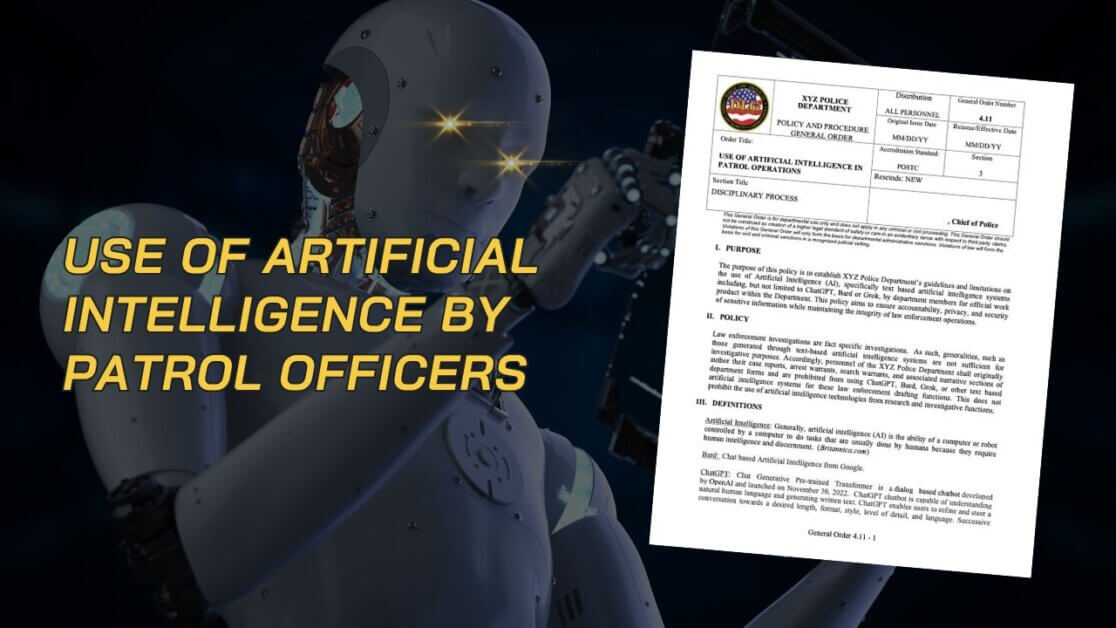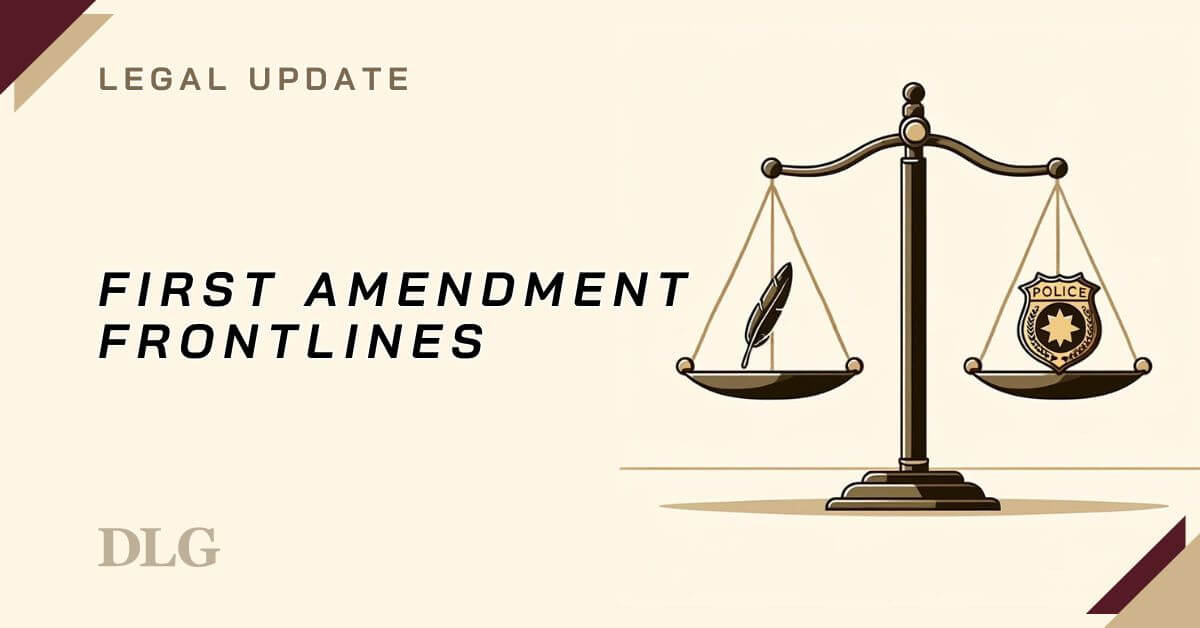Betts v. Brennan, a case in the Fifth Circuit, involves a use of force incident during a traffic stop. The district court initially decided the case and cited Hanks v. Rogers, another use of force case where the court held that the plaintiff successfully rebutted the defendant’s qualified immunity defense. In Hanks v. Rogers, the court concluded that the plaintiff’s Fourth Amendment right to be free from excessive force during a seizure was violated when the defendant stopped the plaintiff for a minor traffic offense, which abruptly escalated to a takedown. The plaintiff posed no immediate threat or flight risk, and at most, he offered passive resistance by asking whether he was under arrest. Although there are some similarities between Hanks v. Rogers and the case at hand, the defendant in today’s case is granted qualified immunity.
FACTS
Early in the afternoon of November 23, 2018, Officer Ross Brennan stopped Timothy Betts for speeding. Officer Brennan exited his cruiser and asked Betts to exit his truck. Initially, Betts complied. Once Betts was outside the truck, Officer Brennan explained he had stopped Betts for going thirteen miles per hour over the speed limit. Betts immediately disagreed, arguing there was “no way” he was going that fast. After a short exchange, Betts sat back down in the driver’s seat of the truck, angled toward Officer Brennan.
Betts, continuing to argue about the stop, handed his driver’s license, insurance, and registration documents to Officer Brennan, who then stepped away from the truck. At this point, Officer Brennan asked Betts to stand at the back of the truck. Betts refused, saying, “I’m fine . . . I’m not causing you no threat . . . .” Officer Brennan moved slightly closer and, over Betts’s protests, told him to “go walk to the back of the truck or I’m going to make you walk to the back of the truck.”
Betts replied that Brennan had no reason or authority to order him to do that. This exchange continued for several seconds, with Officer Brennan repeatedly commanding Betts to walk to the back of the truck “for my safety and your safety.” Betts refused. As the argument continued, Officer Brennan leaned closer to the truck and grasped Betts’s arm while again ordering him to exit. Betts jerked his arm away and told Officer Brennan not to touch him. When Officer Brennan again tried to approach him, Betts stood up to exit his truck, clenched his fist, and told Officer Brennan that he “might want to call [his] people.”
Officer Brennan shouted to Betts to turn around and put his hands behind his back. Betts stood near the driver’s compartment at a 45-degree angle away from Officer Brennan with his hands raised over his head. Officer Brennan repeatedly ordered Betts to put his hands behind his back, and after several commands Betts did so. Officer Brennan then repeatedly told Betts to turn and face him. Betts did not do so but instead kept his body at an angle. Officer Brennan repeated this command several more times, warning Betts that he would tase him if Betts did not comply. When Betts did not comply, Officer Brennan deployed his taser, hitting Betts in the upper leg.
Betts screamed and fell to the ground. Betts complied with Officer Brennan’s commands to turn over on his stomach. Officer Brennan handcuffed Betts, warning that if he continued to resist, Betts would be tased again. The entire encounter, from the initial stop to Betts’s arrest, lasted approximately four minutes. Betts later pled guilty to resisting arrest.
Betts sued Officer Brennan, among others, claiming that Officer Brennan violated the Fourth Amendment by tasing him. Officer Brennan filed a motion for summary judgment based upon qualified immunity. Officer Brennan argued that his single tase of Betts was a reasonable amount of force under the circumstances and not in violation of clearly established law.
The district court disagreed, concluding that Officer Brennan’s use of force was objectively unreasonable under the Fourth Amendment because Betts had been stopped for a minor traffic infraction, posed no threat or flight risk, and was “at most” passively resisting when he was tased.
The district court also found that Officer Brennan’s actions were clearly established as unlawful in Hanks v. Rogers, decided by the Fifth Circuit Court of Appeals in 2017. Officer Brennan appealed.
A police officer is entitled to qualified immunity unless: 1) the officer violated a statutory or constitutional right of the plaintiff; and 2) the right was clearly established at the time of the violation. Officer Brennan argued that the district court ruled incorrectly with respect to both prongs. The Fifth Circuit Court of Appeals agreed.
In Graham v. Connor, the Supreme Court held that whether an officer has used excessive force in violation of the Fourth Amendment depends on “the facts and circumstances of each particular case,” including a non-exhaustive list of factors, such as: (1) “the severity of the crime at issue”; (2) “whether the suspect poses an immediate threat to the safety of the officers or others”; and (3) “whether he is actively resisting arrest or attempting to evade arrest by flight.”
FIFTH CIRCUIT COURT OPINION
In this case, the court found that, of the Graham factors, the extent of Betts’s resistance was the most important to analyzing the reasonableness of Officer Brennan’s use of his taser. After reviewing other Fifth Circuit excessive force cases dealing with active and passive resistance by suspects, the court disagreed with the district court’s conclusion that Betts’s resistance was “at most passive.”
The court noted that Betts adopted a confrontational stance from the beginning of the stop by repeatedly contesting why he had been stopped, ignoring dozens of Officer Brennan’s commands, while disputing his authority. In addition, Betts accused Officer Brennan of lying, batted his hand away, warned Officer Brennan to call other officers, and dared Officer Brennan to tase him. Most importantly, Betts repeatedly disputed Officer Brennan’s power to order him to stand behind the truck. Faced with an angry driver, Officer Brennan reasonably wanted to get Betts away from the driver’s compartment where a weapon might easily be hidden.
The court added that other factors also established that Officer Brennan’s use of force was reasonable. For example, Officer Brennan did not tase as a first resort. Specifically, he did not immediately resort to using his taser “without attempting to use physical skill, negotiation, or even commands.” The court recognized that the speed with which an officer resorts to force is “relevant in determining whether that force was excessive to the need.” In this case, the court found that Officer Brennan “properly use[d] ‘measured and ascending actions that correspond[ed] to [Betts’s] escalating verbal and physical resistance.’” Officer Brennan tried to get Betts to stand behind the truck by invitation, explanation, command, and even by grasping his arm. In addition, Officer Brennan warned Betts more than once that he would be tased if he did not comply with his orders. Only when all those lesser options appeared to have failed did Officer Brennan use his taser. Finally, Officer Brennan tased Betts only once, which was enough to subdue Betts and allow Officer Brennan to handcuff him. Consequently, the court concluded that Officer Brennan did not violate the Fourth Amendment by tasing Betts one time in order to arrest him; therefore, he was entitled to qualified immunity.
In reaching this decision, the court reviewed footage from Officer Brennan’s body camera as well as footage from a security camera from outside the building where the stop occurred. I’ll play some of that for you now…
Next, the court added that, even assuming Officer Brennan violated the Fourth Amendment, its holding in Hanks did not clearly establish that Officer Brennan’s single tase of Betts violated the Fourth Amendment. The court held that the facts in Hanks were too factually dissimilar to the facts and circumstances that Officer Brennan faced to put it “beyond debate” that Officer Brennan’s use of force was excessive.
TAKEAWAYS
Let’s discuss what got Officer Brennan qualified immunity here; first, the court mentions that Officer Brennan “properly use[d] ‘measured and ascending actions that correspond[ed] to [Betts’s] escalating verbal and physical resistance. As we have discussed in previous cases, the force matches the circumstance. Officer Brennan gave Betts several alternatives prior to using force and that worked in his favor. Another huge component here is the body worn camera footage that was able to be used at trial; in this case Betts could have told the facts very differently, but video doesn’t lie. When you are doing your job as well as Brennan did here, it serves you well to have body cam footage backing you up.
Bodycam links:



